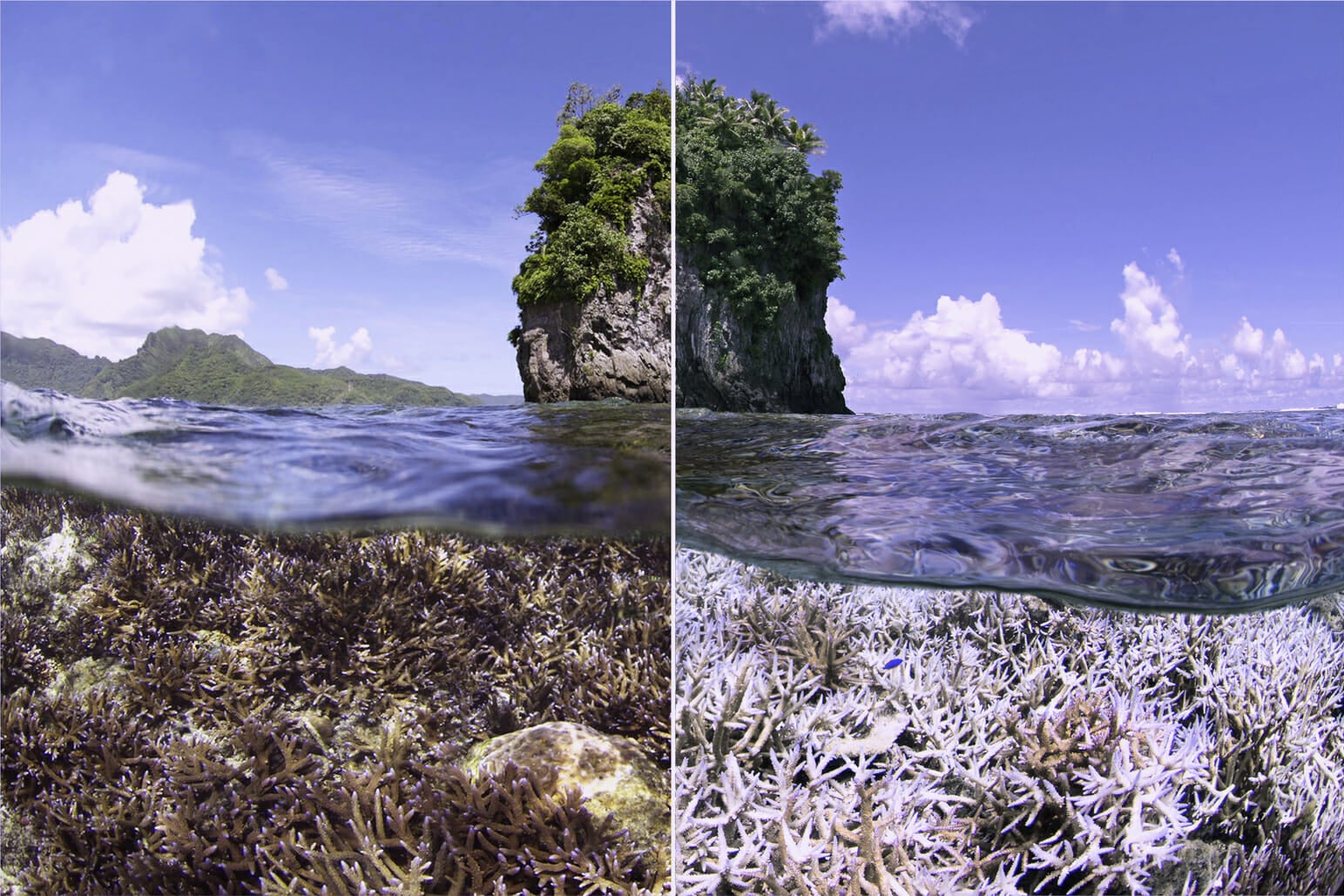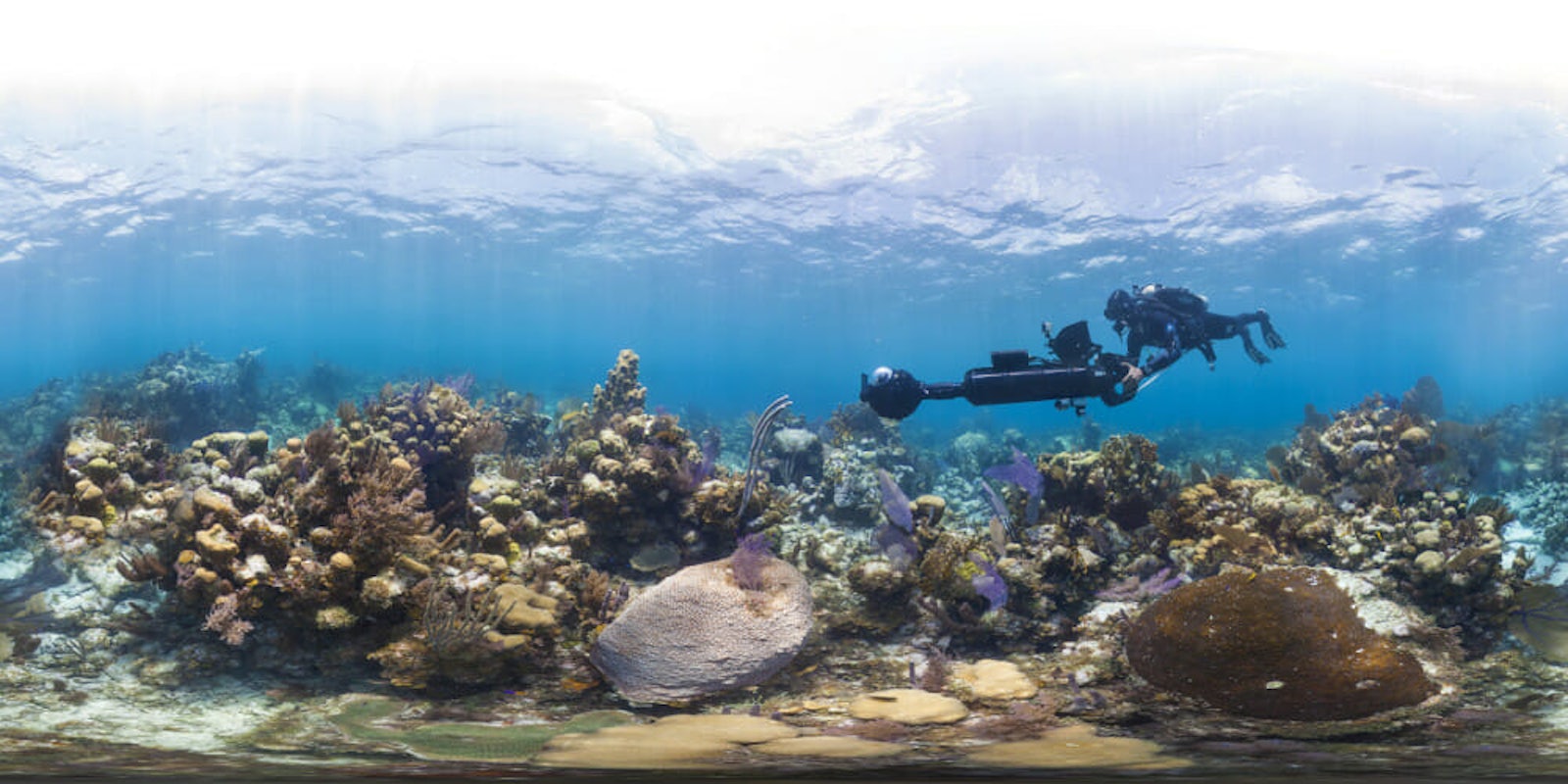Hidden underwater, an entire ecosystem is on its deathbed.
Chasing Coral, a Netflix original documentary out Friday, uncovers a major byproduct of climate change: dying coral reefs, all around the world. Through vivid time-lapse imagery, director Jeff Orlowski exposes the incredible catastrophe called “coral bleaching” which signals mass coral death, often due to rising sea temperatures caused by global warming.
Capturing the phenomenon nearly didn’t happen, though. Even after years of prepping and working with coral reef scientists, documenting the death of these vital aquatic organisms in real time was a back-breaking task.
Orlowski, an environmentally minded filmmaker, began the project when Richard Vevers, an ad man turned ocean activist, reached out to him after watching Orlowski’s 2012 Emmy-winning film Chasing Ice.
“Coming right off of Chasing Ice, honestly I thought I knew a lot about climate change,” Orlowski tells the Daily Dot. “And then I met Richard and learned about what was happening in the oceans and realized I knew practically nothing about climate change and that the vast majority of this problem is happening in the ocean.”
Chasing Coral tells the story of how the duo captured this astounding phenomenon, and it explains the science behind it with help from several coral reef experts. Coral bleaching refers to the occurrence of coral expelling “the algae living in their tissues causing the coral to turn completely white,” according to the National Oceanic and Atmospheric Administration (NOAA). Essentially, it’s the coral’s response to stresses like rising sea temperatures—and it often leads to coral death.

The task at hand for Orlowski and Vevers was showing the world the impact of these global bleaching events, which have decimated coral reefs from Florida and Hawaii to Australia’s Great Barrier Reef.
The duo worked with an underwater webcam company based in Boulder, Colorado, called View Into the Blue to develop special cameras—complete with a wiper system—that could live underwater for months at a time. They also teamed up with NOAA’s Mark Eakin to determine when a mass bleaching event would occur.
Initially Orlowski and his team, including View Into the Blue’s Trevor Mendelow, “coral nerd” researcher Zack Rago, and others set up cameras in three locations likely to be effected: Bermuda, the Bahamas, and Hawaii. When they looked back through the footage after two months of automated time-lapse underwater photography, though, they found that the cameras malfunctioned and they weren’t aimed at the bleached corals.
“We knew that if we didn’t capture it the first time around, that we might have some backup options,” explains Orlowski. “Unfortunately, the bleaching continued and only got worse, but it did open up this opportunity for us to capture it again. So that was lucky for the film, but unlucky for the planet.”
Chasing Coral also touches on the deep personal connection that Rago and Vevers have with the cause.
“Honestly, a lot of the successful nature stories that are out there are also anthropomorphized,” explains Orlowski. “By focusing on Zack and on Richard, and getting a glimpse into their worldview, and why they care about these ecosystems, then hopefully an audience can resonate with that and can care about that.”
This sentiment especially came to a front when one of the filming teams, comprised of about 10 people, ended up having to document a bleaching event in the Great Barrier Reef without automated equipment. Orlowski and Rago would dive to several spots along the reef and capture footage manually for 40 days straight. The film depicts the researchers’ tedious and stressful process as they witnessed the reef dying firsthand.
“The Great Barrier Reef was like my mecca,” Rago wrote in a statement. “It’s a place I’ve been trying to get to my entire life. And then to finally go there, just to watch it die before my eyes, was pretty awful. By the end, there was little to nothing alive. It hit me pretty hard.”
Large portions of the Great Barrier Reef are now dead. And this is just the beginning of much more ocean destruction due to climate change. “Ninety-three percent of the heat from climate change is trapped in the ocean,” notes Orlowski. “If you are not looking at ocean changes, you’re missing the whole story. There are huge dead zones in the ocean right now.”
It’s a critical message, and Orlowski hopes that Chasing Coral’s striking imagery of large coral reefs turning bone white will mobilize viewers.
“My hope is that the world wakes up. And we wake up urgently, and immediately,” he says. “Without a massive moonshot-style approach to solving this problem, we’re going to see such traumatic changes on this planet that we cannot even comprehend.”


